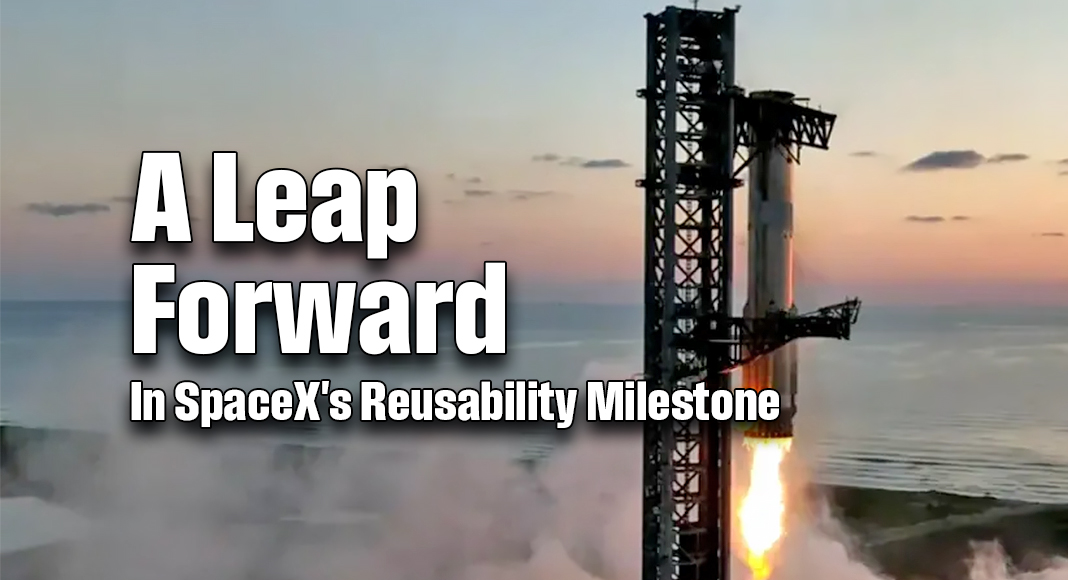
Texas Border Business
Texas Border Business
Starbase, Texas – October 13, 2024
SpaceX took a significant step toward revolutionizing space travel on Sunday, October 13, with the successful completion of the fifth test flight of its Starship vehicle. Launched at 7:25 AM CST from the company’s Starbase facility in Texas, the flight demonstrated critical advancements in reusable rocket technology, with the potential to drastically lower the cost of space missions.
The flight was highlighted by the first-ever successful catch of SpaceX’s Super Heavy booster using the company’s towering mechanical arms, dubbed “Mechazilla.” This achievement represents a major leap forward in the company’s ambition to create a fully reusable launch system capable of supporting frequent missions to the Moon, Mars, and beyond.
A Successful Booster Catch
The primary focus of the test was to recover the Super Heavy booster using the tower’s mechanical arms after it completed its initial burn. This unprecedented maneuver is designed to bring the booster directly back to the launch tower, eliminating the need for ocean landings. By achieving a successful booster catch, SpaceX demonstrated the feasibility of recovering and reusing the largest rocket ever built, a breakthrough that could drastically reduce turnaround times between launches.
“SpaceX has always aimed for rapid reusability, and today’s successful catch of the Super Heavy booster brings that vision much closer to reality,” a SpaceX spokesperson said.
Heat Shield Tested Under Extreme Conditions
Another key flight element was the upgraded heat shield on the Starship vehicle, which was tested to withstand the extreme heat generated during atmospheric reentry. The reworked shield, consisting of thousands of ceramic tiles, survived temperatures of up to 2,600°F as Starship reentered Earth’s atmosphere.
SpaceX also trialed new aluminum-wrapped tiles as part of ongoing efforts to improve Starship’s durability. The heat shield successfully passed through the most intense phase of reentry, providing critical data that will inform future upgrades, particularly for crewed missions to deep space.
Controlled Reentry and Splashdown
Following its separation from the Superheavy booster, the Starship performed a controlled reentry and soft splashdown in the Indian Ocean, hitting its target zone with remarkable precision. This flight demonstrated improvements in the Starship’s aerodynamic control, which is essential for landing missions on other planets.
One of the key maneuvers tested was the “flip maneuver,” in which the Starship orients itself during descent. This maneuver is crucial for future landings on surfaces like the Moon or Mars, where precision is paramount.
Major Technological Advancements
Throughout the test, SpaceX tested multiple technologies that are central to its goal of creating a reusable, reliable spacecraft:
- Mechazilla Booster Catch: SpaceX’s “chopsticks,” the mechanical arms used to catch the returning booster, operated as planned. This new method of recovery could greatly shorten refurbishment time, enabling rapid reusability.
- Heat Shield Resilience: The improved heat shield withstood the extreme heat of reentry, ensuring that Starship could return safely from space.
- Raptor Engine Performance: The test flight utilized SpaceX’s powerful Raptor engines—33 on the Super Heavy booster and six on Starship—which performed critical maneuvers like stage separation and controlled reentry.
Paving the Way for Future Space Exploration
The success of this test flight underscores SpaceX’s progress toward making space travel more affordable and accessible. The company’s ambitious plans include sending Starship to the Moon as part of NASA’s Artemis program and launching uncrewed Starship missions to Mars as early as 2026. With rapid advancements in reusability, SpaceX aims to enable frequent missions, reducing the cost and complexity of space exploration.
Starship is designed for missions to the Moon and Mars and for routine operations in Earth’s orbit, from satellite deployment to space tourism. Sunday’s test flight has brought the company closer to its goal of creating a spacecraft that can be reused like an airplane, dramatically lowering the cost of space access.
Looking Ahead
With the recent completion of the Star Factory at Starbase, SpaceX is ramping up production capabilities, aiming to build hundreds of Starships annually. This will enable more frequent flight tests and, eventually, commercial operations, positioning the company as a leader in the future of space travel.
Additionally, the integration of Starlink technology during the test flight enabled live telemetry and video streaming, even during the mission’s most challenging phases. This supports vehicle monitoring and demonstrates Starlink’s broader potential for providing communication solutions in remote or disaster-stricken areas on Earth.
The success of Starship Flight 5 represents a major step forward for SpaceX in achieving its vision of a fully reusable spacecraft. The ability to catch and reuse the Super Heavy booster using the Mechazilla arms and the heat shield’s performance during reentry are key advancements that will accelerate the company’s ambitious plans for space exploration.
As SpaceX pushes the boundaries of technology, each successful test brings the company closer to sending humans to the Moon, Mars, and beyond. The future of space travel is rapidly approaching, and SpaceX is at the forefront of this new era.













